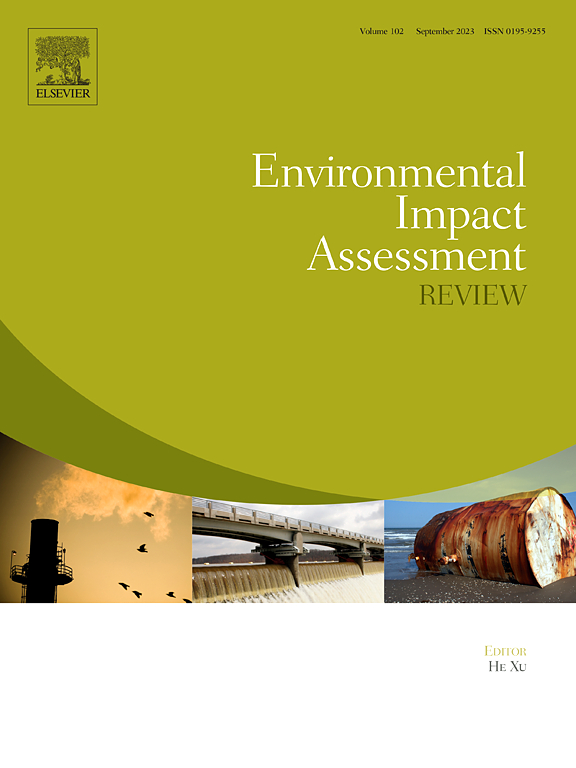Research on carbon intensity of global seaborne metallurgical coal exports and implications
IF 11.2
1区 社会学
Q1 ENVIRONMENTAL STUDIES
引用次数: 0
Abstract
Despite escalating environmental regulations and intensifying decarbonization demand within the steel industry, comprehensive frameworks for emission disclosure remain under development. The sector is gradually incorporating requirements to report upstream emissions that are tied to raw material supply chains. This study presented a detailed carbon footprint assessment of seaborne metallurgical (met) coal trading by creating a global database of seaborne met coal export mines and optimizing both the trade matrix and mine-to-destination transportation network. Employing a bottom-up approach coupled with life cycle assessment (LCA) methodology, this study calculated carbon intensity (CI) of global seaborne met coal mines. The analysis reveals significant variability in CI, ranging from 63.4 to 665.5 kg CO2eq/t, with a global volume-weighted average of 217.6 kg CO2eq/t. The variability is influenced by factors including mine extraction methods, raw coal quality, transportation mode, and destination distance. The heterogeneity of CIs highlights substantial decarbonization potential. Forecasts of seaborne met coal demand through 2050 suggest that prioritizing low-carbon supply chain pathways alone could yield CO2eq reduction by an average of up to 230Mt, even in the absence of additional emission mitigation strategies
全球海运炼焦煤出口碳强度及其影响研究
尽管钢铁行业的环境法规不断升级,脱碳需求不断增强,但全面的排放披露框架仍在制定中。该行业正在逐步纳入报告与原材料供应链相关的上游排放的要求。本研究通过建立全球海运冶金煤出口矿山数据库,并优化贸易矩阵和矿山到目的地的运输网络,对海运冶金煤贸易进行了详细的碳足迹评估。本研究采用自底向上方法结合生命周期评价(LCA)方法,计算了全球海运煤矿的碳强度(CI)。分析显示,CI的显著变化范围为63.4至665.5 kg CO2eq/t,全球体积加权平均值为217.6 kg CO2eq/t。变异性受矿山开采方式、原煤质量、运输方式和目的地距离等因素的影响。CIs的异质性突出了大量的脱碳潜力。对到2050年海运煤炭需求的预测表明,即使没有额外的减排战略,仅优先考虑低碳供应链途径就可以平均减少高达2.3亿吨的二氧化碳当量
本文章由计算机程序翻译,如有差异,请以英文原文为准。
求助全文
约1分钟内获得全文
求助全文
来源期刊

Environmental Impact Assessment Review
ENVIRONMENTAL STUDIES-
CiteScore
12.60
自引率
10.10%
发文量
200
审稿时长
33 days
期刊介绍:
Environmental Impact Assessment Review is an interdisciplinary journal that serves a global audience of practitioners, policymakers, and academics involved in assessing the environmental impact of policies, projects, processes, and products. The journal focuses on innovative theory and practice in environmental impact assessment (EIA). Papers are expected to present innovative ideas, be topical, and coherent. The journal emphasizes concepts, methods, techniques, approaches, and systems related to EIA theory and practice.
 求助内容:
求助内容: 应助结果提醒方式:
应助结果提醒方式:


